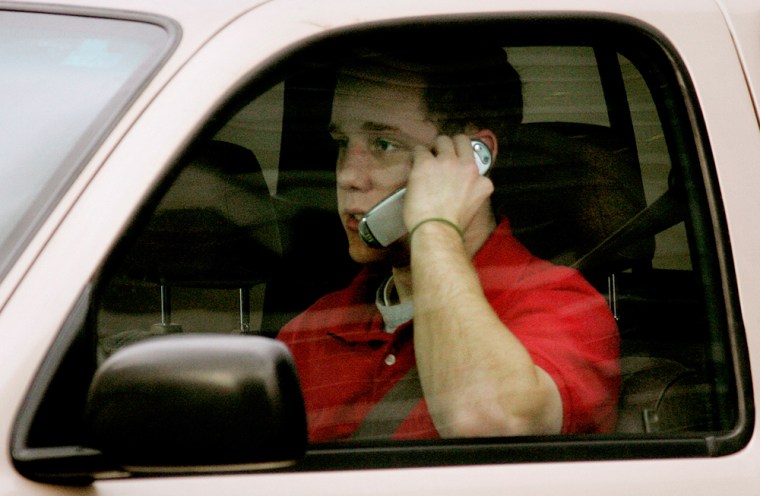Pardon the pun, but I think I just ran into the poster child for Distracted Driving Week, which, it so happens, runs June 9–13.
He was piloting an RV along Alaska’s Seward Highway, and I came upon him as I rounded a bend just south of Anchorage. He was doing all of 50 mph, apparently taking in the scenery as he weaved back and forth between our two northbound lanes.
Given the surroundings, I couldn’t blame him for gawking or dawdling. That is, until I honked, passed him on the next straightaway and looked over to see, not a sheepish driver, but an amateur cinematographer capturing the scenery, camcorder in hand. When he panned in my direction, he raised his other hand and waved.
I can only imagine how he was holding the wheel.
Driving under the influence (of technology)
Part of National Safety Month, Distracted Driving Week is an initiative sponsored by the National Safety Council, the Congressionally chartered non-profit group dedicated to preventing accidental injury and death. Nearly 80 percent of crashes, says the group, involve some form of driver inattention.
NSC’s campaign doesn’t mention vehicular videotaping; instead, it highlights what are probably the two biggest distractions on the road today: talking on cell phones and text messaging. We all know such mobile multi-tasking is dangerous, yet we do it anyway, choosing to disregard common sense, the scientific record and the rising human toll.
In fact, according to the National Highway Traffic Safety Administration, as many as 10 percent of drivers are using a cell phone behind the wheel at any given time. Scarier still, a University of Utah study in 2006 found that the impairment effect of talking on a cell phone was comparable to driving with a blood-alcohol level of .08 percent.
And text messaging may prove to be an even bigger menace. Last year, Nationwide Mutual Insurance reported that 19 percent of drivers, and 37 percent of drivers aged 18 to 27, drive while texting. Some drivers are so “intexticated,” they should probably be busted for DWT.
Little wonder, then, that states are passing laws prohibiting cell phone use and text messaging while driving. Currently, Connecticut, New Jersey, New York and the District of Columbia ban the use of at least some types of cell phones (some permit hands-free devices). Similar restrictions are set to go into effect in California and Washington July 1.
Meanwhile, only two states — New Jersey and Washington — have DWT laws on the books, with a similar ban set to go into effect in Minnesota on August 1. (For a state-by-state list of current cell phone driving laws, visit the Governors Highway Safety Association.
Criminal activity — or just plain stupid?
But will stricter laws make us safer? Not necessarily. In some states, talking/texting while driving is considered a secondary offense, meaning you have to get caught doing something else wrong first. In others, many offenders will simply get more surreptitious in their chitchat. As for states that ban hand-held, but not hands-free, devices, well, studies show the latter are no safer than the former.
Ultimately, the problem isn’t specific devices, but rather, distractions in general. Eating, reading, putting on makeup — they’re all potentially hazardous when you’re behind the wheel, and banning talking/texting won’t stop people from doing stupid things.
So while various states sort things out on the legal front, I have another suggestion. How about we all agree to abide by the clear and simple laws of common sense? To wit:
Skip the lip gloss: In April, the imploding poptart better known as Britney Spears rear-ended another car on L.A.’s 101 Freeway while putting on makeup. Suffice it to say that if Brit’s doing it (cf., shaving your head, going commando, losing custody of your kids), it’s probably a bad idea.
Put Bowser in the back seat: In May, the California Assembly passed a bill making it illegal to drive with a pet on your lap. Like I said, I don’t know if bans are the answer, but I do know this: If dog is your copilot, I’m keeping my distance.
Avoid the crash diet: According to a 2007 study in England, travelers who dine while driving are twice as likely to have an accident. I imagine the risk is even higher here in the land of drive-through chili-cheeseburgers and fried chicken by the bucket.
The list, of course, goes on and on, but the bottom line remains the same: Engaging in other activities while driving is inevitably distracting, and inattention of any sort is an accident waiting to happen.
Come to think of it, maybe that’s why the National Institute for Automotive Service Excellence chose this week to honor the country’s car mechanics and collision specialists. National Automotive Service Professionals Week, it turns out, runs June 9–15.
You could look it up — just not while you’re driving, OK?
